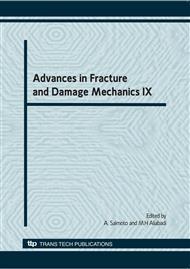p.293
p.297
p.301
p.305
p.309
p.313
p.317
p.321
p.325
Development of Optical Sensor for Detecting Micro Crack on Contact Surface
Abstract:
This paper discuses the development of the optical sensor due to detect the micro crack and measure the surface property of the contact surface in the equipment. To measure the surface property is an index for detecting no uniformity contact and / or micro crack on the contact surface. So, there is demand of the development of the sensor to measure the surface property in using equipment. This sensor has two optical systems, called stylus and skid, to reduce the influence of vibrations on the measurement result. The stylus measures the surface property with the vibration, and the skid measures only the displacement between the sensor and the objective surface at the same place as the stylus, i.e. the vibration. Therefore, the stylus signal minus skid signal shows the surface property. In this research, the proposal of the principle of this system, the methods of the development and the evaluation of the stylus system of the sensor and the development of prototype sensor is described.
Info:
Periodical:
Pages:
309-312
Citation:
Online since:
November 2010
Price:
Сopyright:
© 2011 Trans Tech Publications Ltd. All Rights Reserved
Share:
Citation:


